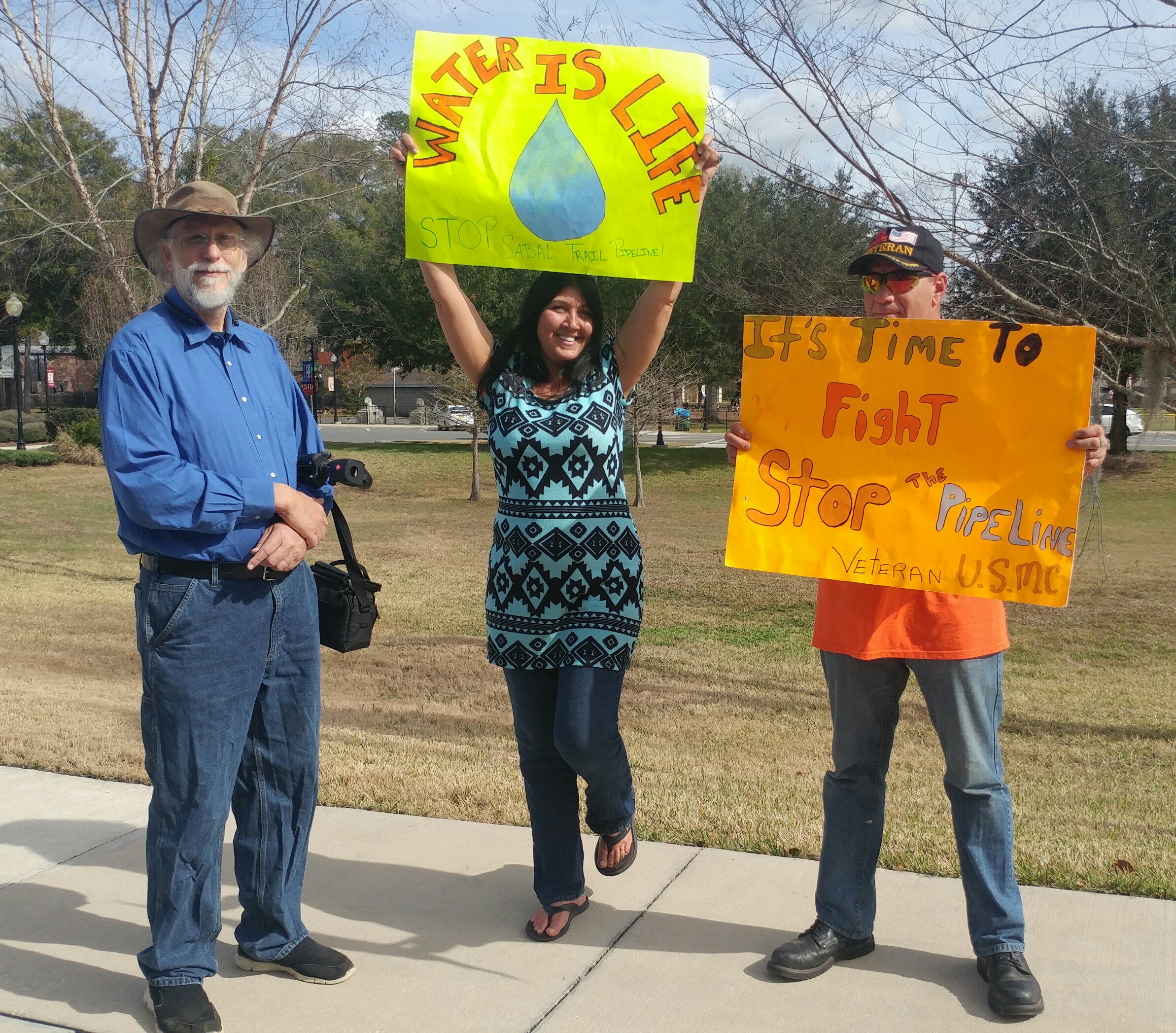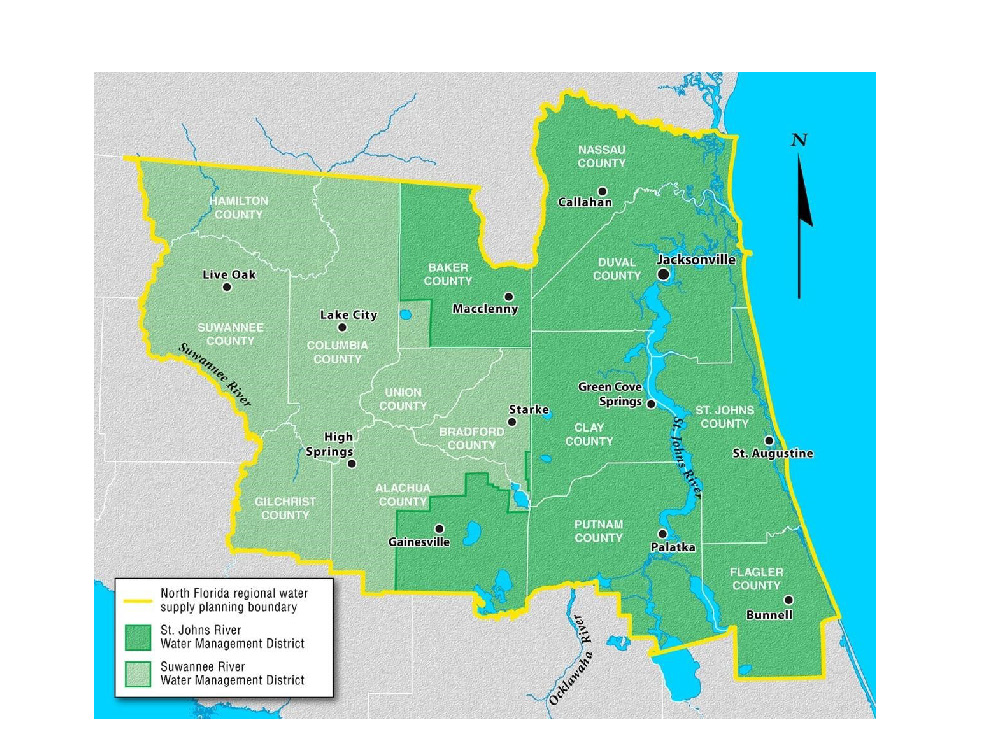
ALACHUA, Fla. — The first-ever long-range plan for water use in a vast, North Florida region — home to around 1.5 million people in 14 counties stretching over more than 8,000 square miles — was approved here on Jan. 17, in a joint meeting of the governing boards of two water management districts.
“This plan stands squarely on our science,” said Dr. Ann Shortelle, executive director of the Saint Johns River Water Management District.
Shortelle was previously executive director of the Suwannee River Water Management District, whose governing board — along with that of the SJRWMD – approved the water plan for a region of Florida that includes more than 140 springs.
The two-hour-long meeting was the second occasion that the two boards had convened together. The first time was at the start of the regional water-planning process, in 2012.
Anticipating a large turnout for the final meeting — following dozens of meetings over four years, during which members of the public had aired a range of views on the water plan — a public address system was set up outside city hall, where the meeting was held. But only about a dozen demonstrators assembled, waving handmade posters. Some of them criticized the water plan during the public comment portion of the meeting, prior to the boards’ unanimous approval of the plan.
Dr. Robert Knight, the founder and director of the Florida Springs Institute, cited a reduction of as much of 40 percent in water flow for some rivers in the region — including Silver Springs and the Suwannee River — and urged a halt to all new permitting for water use.
“We are not protecting the natural environment as we are required to do by law,” said Knight, a wetlands ecologist who was previously employed by each of the two districts.
Florida law requires the state’s water management districts’ governing boards to “conduct water supply planning … where it determines that existing sources of water are not adequate to supply water for all existing and future reasonable-beneficial uses and to sustain the water resources and related natural systems …”
According to the new plan, the districts had determined that groundwater alone cannot supply an expected 21 percent increase in water use in the region over a planning period that extends to 2035 “without causing unacceptable impacts to water resources.” The possibility of drought would increase water demand further for the region, which extends, in the north, from the Georgia border with the Florida counties of Hamilton, Columbia, Baker and Nassau south as far as Gilchrist, Alachua, Putnam and Flagler counties and including, as well, Florida’s Atlantic coast north of Daytona Beach.
Because of the projections for increased water use — as high as 117 million gallons per day by 2035 — the North Florida Regional Water Supply Partnership was established in 2011 by the Florida Department of Environmental Regulation. And 36 public hearings were held throughout the region, including one meeting with the Southwest Water Management District.
But some environmentalists who attended the final meeting in Alachua complained that their input — throughout the public hearings, which were conducted by a Stakeholder Advisory Committee consisting of 12 appointees representing public water supply, commercial/power generation, industrial/mining, agriculture, environmental and local governments — had been ignored.
“The environmental side of the house is underrepresented on that committee,” said Dr. Pat Welsh — a retired oceanographer and environmental engineer. “It is underrepresented in everything we do.”
The advisory committee had voted unanimously in November in favor of the water plan. And Jacquie Sulek, a resident of Fort White who had served on the committee, spoke at the boards’ meeting Tuesday in favor of the plan.
“Adoption of the regional water supply plan will be a very, very important first step,” she said. “This is not the end. This is the beginning.”
Don Quincey, chairman of the SWRWMD, said of the comments from those who opposed the plan, “We haven’t heard anything today that we haven’t heard many times.”
Quincey — the owner of Quincey Cattle Company, located in Chiefland — is also a member of the board of the Florida Cattleman’s Association.
And water pollution — and water consumption — due to cattle ranching were among the concerns expressed by some who attended the meeting. Stephen Hunter, a longtime resident of Bradford County, which is included in the water-planning region, complained of the SJRWMD’s recommendation last month of approval for an increase in water consumption for a cattle ranch near Silver Springs.
“It’s our water. It’s my grandchildren’s water and yours,” he said.
The region includes the St. Johns River, Nassau River, portions of the St. Mary’s River, Orange Lake and the Santa Fe, Alapaha and Ichetucknee rivers.
To compensate for expected increase in water consumption, the plan relies heavily on increased water conservation, with conservation expected to account for 46 percent — or 54 million gallons per day throughout the region — by 2035.
Rick Hutton, an engineer who oversees water and wastewater planning at Gainesville Regional Utilities, was among the representatives of a coalition of utilities in the region who spoke in favor of the plan and its reliance on water conservation.
“Our customers have reduced their per capita water use by 28 percent since 2007,” Hutton said, adding that conservation had reduced overall water consumption for GRU by 18 percent “even though our population has increased by 13 percent.”
“We support the plan,” he said.





